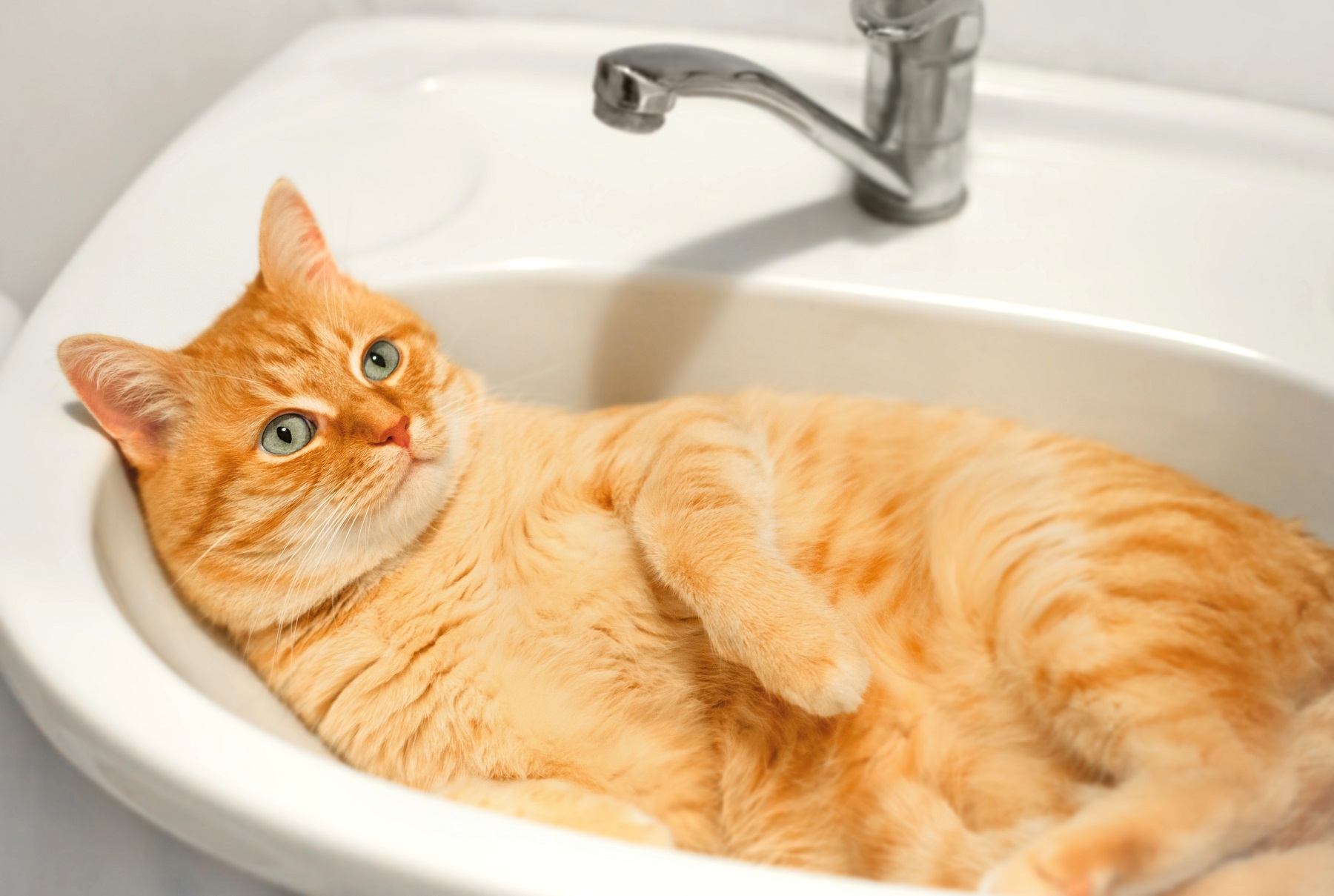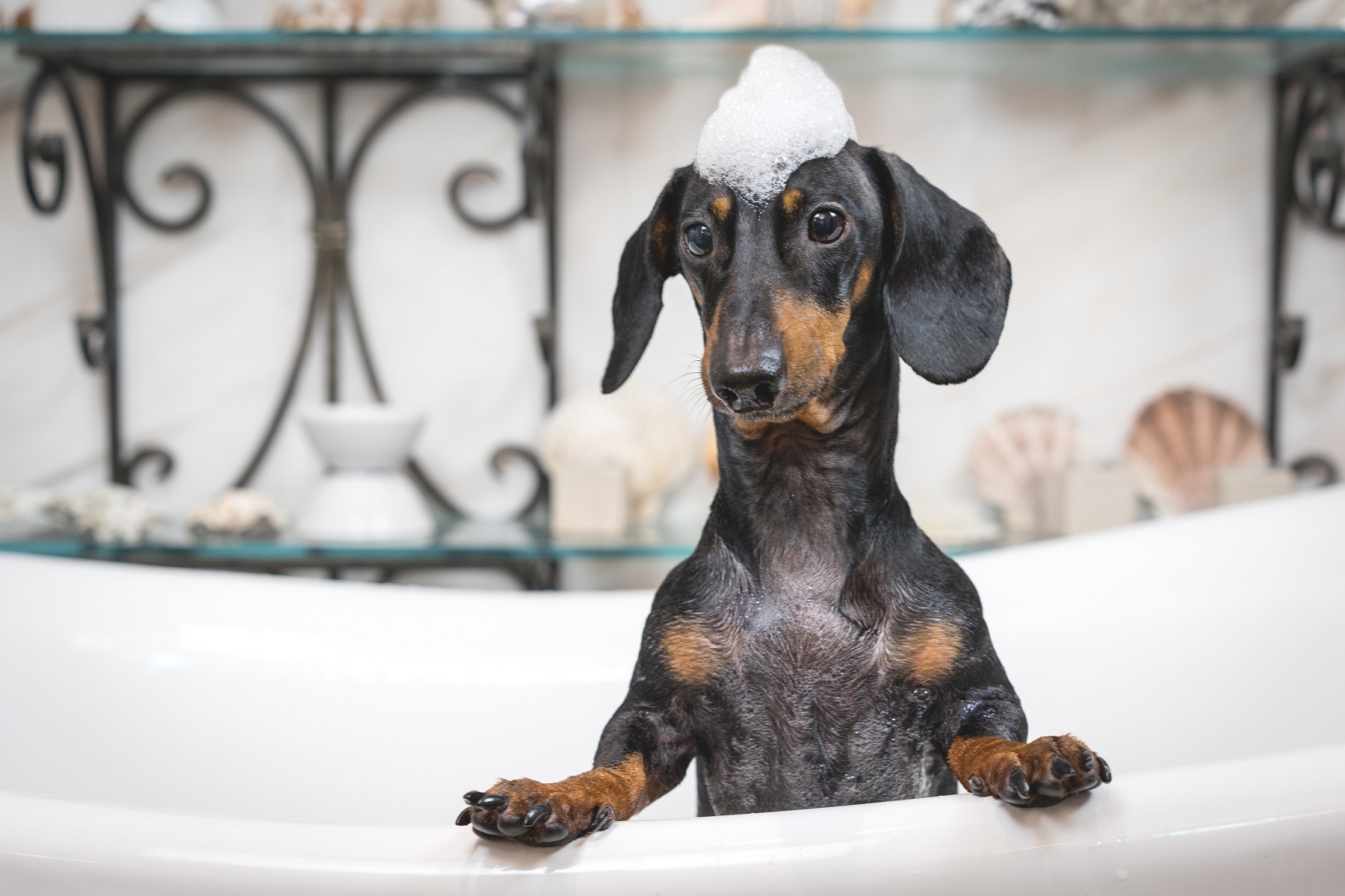Tips from Your 24-Hour Plumber on Protecting Your Home’s Plumbing from Pets
Pet owners love their pets, and many treat them like a member of the family. Some cats and dogs will want to get into the shower or tub with you. Some cats also like playing with water as it comes out of the faucet. Both cats and dogs can drink water out of sinks and toilets if given the opportunity.
Whether your pet loves or hates water, there are several pet-proof plumbing tips you need to know to help keep your pet and your plumbing safe.

Tip #1: Install a childproof lock to the toilet bowl lid.
One of the biggest mistakes pet owners make is allowing their pets to drink water out of the toilet. To put this in perspective, ask yourself if you would drink the water out of the toilet. There can be bacteria, germs, and human waste left in the bowl that your pet is ingesting. Not to mention, chemical residues from cleaning products.
Tip #2: Never flush kitty litter or cat waste down the toilet.
It might seem like a good idea when scooping out the litter box to simply toss the kitty waste into the toilet and flush it away. Even if the litter brand says it is flushable, it can still wreak havoc on your plumbing. Kitty litter is designed to absorb moisture.
When it absorbs too much moisture, it becomes clay-like. This clay-like substance can stick to the interior of drainpipes. Eventually, the litter can build up and cause clogs. It is better to recycle plastic grocery store sacks for disposing of cat waste and tossing it into the trash.
Tip #3: Use drain screens in the tub and shower to catch hair.
To prevent the excess pet hair your cat or dog sheds from going down the drain when they get into the tub or shower, make sure you are using drain screens. The screens catch the excess hair so you can remove it and toss it into the trash. If you don’t use drain screens and let all that hair go down the drain, eventually you will end up with a clog and need to call a 24-hour plumber for help.

Tip #4: Protect exposed pipes from your pets.
EX and plastic pipes can become your pet’s favorite chew toy, especially for puppies, if they can easily access them. If they can get under sink cabinets or access pipes in a crawl space, you need to make sure they are covered. There are different types of pipe wraps you can use that will deter your dog from chewing on them. Additionally, you can also discipline him by training him. You can use chew toys for pets to teach them what is an acceptable thing to bite on. You can also take the assistance of a trainer, who you can find online by searching for Puppy Training Classes Newcastle or another location.
Furthermore, if you see a pipe leakage because your pet chewed it off, you can contact a plumber immediately to reduce the chances of flooding.
Tip #5: Establish outdoor play areas away from underground plumbing lines.
Pets like to dig, especially dogs. Some dogs will start digging a hole and continue digging it deeper and deeper. The last thing you need is for your pet to uncover your underground plumbing lines and accidentally break the water supply or sewer line.
By using these useful plumbing and pet tips, you can avoid costly plumbing repairs later. If you need help wrapping exposed pipes or pet-proofing plumbing, please feel free to call Christianson Air Conditioning & Plumbing at 512-246-5400 today!
We have locations in San Antonio, Austin Metro, New Braunfels, and Temple, and we offer 24-hour plumbing service for emergencies.
Tags: 24-Hour Plumber, Pet-Proof Plumbing, Plumbing and Pets



Sorry, comments for this entry are closed at this time.